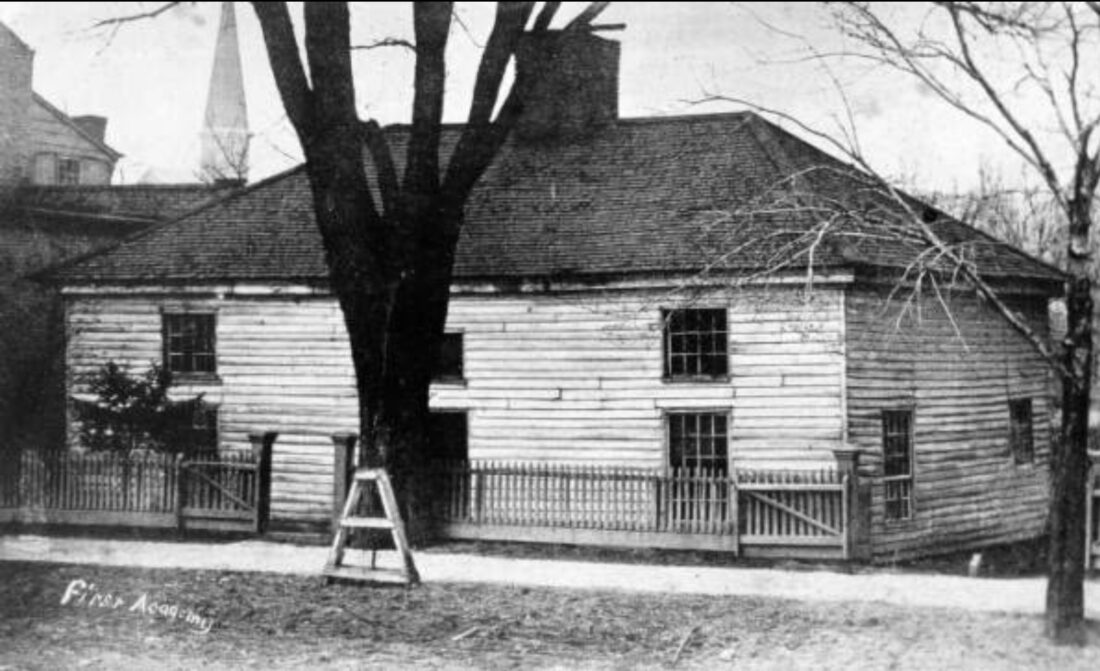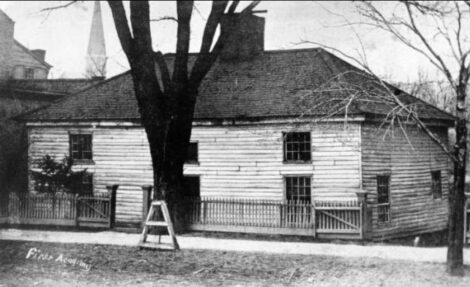Schools in early times
- (Photo provided by Professor Jim O’Donnell, Marietta College, and Washington County Historical Society) Muskingum Academy building.

(Photo provided by Professor Jim O’Donnell, Marietta College, and Washington County Historical Society) Muskingum Academy building.
Leaders wanted the new Northwest Territory to be a civilized place where residents could live and prosper in peace. There was concern that this vast tract, larger even than the land of the original 13 states, could be overrun by lawless clans, traders, and speculators. The solution was the enlightened governance in the Ordinance of 1787. Manasseh Cutler helped negotiate the Ordinance with Congress in 1787. Cutler was a remarkable multi-talented person – a polymath (I had to look it up), as The Pioneers author David McCullough called him. He was fervent about the necessity of religion, morality, and education for an orderly society. Cutler worked to assure that those provisions were specified in the Ordinance.
Education was an immediate high priority. In March, 1788, before anyone ever set foot in Ohio, Ohio Company Directors resolved to hire “an Instructor eminent in literary accomplishments and the Virtue of Character” to oversee “the Education of Youth.” They established a separate fund for that purpose.
Historian Samuel Hildreth credits Belpre with starting the first school: “One of the first things…was to make provision for teaching their children the rudiments of learning, reading, writing and arithmetic. Bathsheba Rouse was employed in the summer of 1789 to teach the small children. She is believed to be the first female who ever kept a school within the present bounds of Ohio.” Cambridge University graduate Daniel Mayo taught older boys and girls in Farmer’s Castle, in the blockhouse of Colonel Battelle. Many others taught as needed. Master builder and civic leader Joseph Barker taught one winter in 1793 at Belpre; his family had moved there to avoid smallpox.
Marietta started classes taught by Major Anselm Tupper in the winter of 1789-90. He was uniquely qualified – distinguished Revolutionary War veteran (enlisted at age 11, lieutenant at 16 – imagine taking orders from a 16-year-old), surveyor, and poet. Joseph Barker: “Tupper had a genius & Capacity & taste for literary pursuits.” Benjamin Slocumb also taught there, a Brown University graduate, but he was labeled “a dissipated man,” by truth-teller Samuel Hildreth. Jabez True, Marietta’s first physician, instructed students at The Point, along with Jonathan Baldwin and a Mr. Curtis who held all classes in his barrel-making shop. Samuel Hildreth captured the spirit of our first settlers, “Notwithstanding the poverty and privations of the inhabitants…, schools were kept up…nearly all the time.”
After Native American tensions ended in 1795, Marietta grew and the economy improved. On April 29, 1797 residents met to plan a building for an academy, the first institution of higher learning in the territory and predecessor to Marietta College. A committee chaired by Rufus Putnam took only ONE WEEK to present a plan. They did it! Putnam’s role is fitting; he was denied schooling by his stepfather after age 9 and was often embarrassed by his lack of formal education. The building cost: $1,000. Location: Front Street where First Bank is today. Funding: People paid the money themselves; 50 pledges totaled $1,162. Three others made in-kind donations of labor and material. There was also a provision for whiskey, then a necessary “resource” for workers.
Construction began in 1800 and classes started later that year. The building was 40 ft long by 24 ft wide with 12 ft ceilings. The Academy’s scholastic plan: Courses included writing, reading, arithmetic, geography, grammar, Latin, and Greek. Scholars must be “civil…and respectful everywhere, to all.” Pupils would learn “entertaining and instructive speeches” which they would recite to an audience on the last day of every quarter.
The seeds of the founders and the Ordinance for education were bearing fruit, leading eventually to the founding of Ohio University and tax-funded common school education in Ohio.

